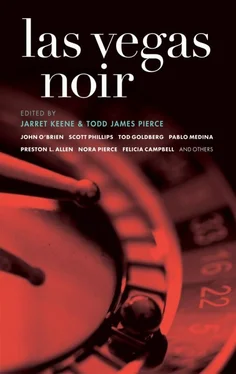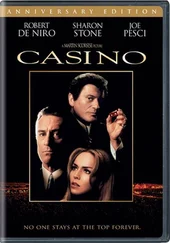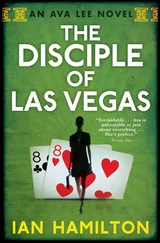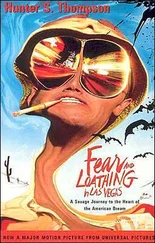Spanish was clearly not her first language either, but he managed to ascertain that her husband and the rest of the men in the community worked construction jobs as well as carved the comical calacas , as she called the skeletons, for ¡Viva! That was where they were at the moment, at their construction jobs — they’d be back later, she said, though she was unable to specify exactly when. It occurred to Ortiz that these men might make better informants, to use the anthropological term — and his was an anthropological investigation, was it not? — than this hesitant young woman.
Ortiz had a weakness for women’s legs; the sight of a well-shaped female leg made his own legs literally weak, gave them a heaviness. This woman’s brown calves were perfectly shaped, as if turned on a lathe, and her small foot arched nicely in her sandal, a sandal very similar to his huaraches . Her toes were small and round. She was certainly no India patarrajada , no “split-footed Indian,” to use the most common anti-Native epithet in Mexico, the equivalent perhaps of calling an African American “nappy-headed.” He flicked his own Native hair behind his shoulders with both hands.
Slowly, discreetly, she bunched her dress in her hand, drawing it up along her leg. He swallowed, and watched. There, beginning about mid-thigh, she revealed to him a gigantic bruise, yellow-tinged on the edges and shading into a deep, mottled purple.
“Jesus!”
She jumped to her feet and smoothed her skirt. “The men will be back later,” she repeated. She stepped out of the house. It was clearly time for him to go.
Ortiz made his way back to ¡Viva! and the conference in a kind of daze. He attended another panel presentation, but all he could think about was the young woman, and her bruise, and the way she’d inched her skirt up to reveal it to him. He fantasized tending her injury, applying Native-style poultices made of wild herbs and macerated cactus fruit they’d gather together in the flowering Mojave, and his own legs grew weak again.
He found the gallery of Mexican folk art and contemplated the Mictlano calacas there. The skeletons in this display wore formal dress, the females in furs and gowns, the males in tuxedos. One of the male calacas was a dapper little guy in glasses who reminded Ortiz of the rude professor from the day before.
Ortiz returned to the barrio around 5, when most of the conference-goers were heading off to their wine-and-cheese receptions for this new program or that new journal. Good for them. He, Ortiz, had fieldwork to do. And the balls to do it.
He found a group of Mictlano men under the elm tree, drinking Bud Lite. Two of them were still dressed in their work clothes — tar-stained jeans, sweaty T-shirts, cement-smeared work boots. The other three had changed into clean cotones , which was the term Talon had taught him for the loose white clothing Mexican peasants favored. One of the men dressed in white was the man he’d seen the day before; again he sat wielding his machete against a block of wood, which had taken the wide, lobed shape of a pelvic bone.
Ortiz shook hands all around. Their faces were impassive and their handshakes surprisingly limp for men who work with their hands. They glanced mistrustfully at his name tag. The man from the day before was a full head shorter than Ortiz, but stocky. His face was broad and his eyes small and very red. A dirty cord bound the machete to his wrist. According to Professor Talon, it was customary among men in remote parts of southern Mexico to tie their machete handles to their wrists so they wouldn’t misplace them. These folks were the real thing, no doubt about it. Ortiz’s research into their ways and how these ways were affected — or not — by their living and working in Las Vegas was going to make a great, great study. Soon enough he himself was going to be tying his satchel to his wrist so as not to lose the invaluable information he gathered.
“ Usted es el investigador ,” the man with the machete said.
“ Sí ,” Ortiz replied. He didn’t like the continued looks of apprehension on the men’s faces. It was time to be straightforward about what kind of “investigator” he was. That was the only way to get them to be forthcoming about their lives. He certainly didn’t want them to think he was with Immigration or something.
“ Soy estudiante ,” Ortiz said. And in a gesture meant to put them further at ease, he unpinned his ACA name tag and tossed it into the clutter of empty beer cans.
“Ah,” said the stocky man. “ Estudiante .”
Ortiz didn’t care for the man’s slightly mocking tone. Still, everyone seemed to relax at the revelation that he was just a lowly student, and that was good.
Ortiz then made a gesture they found very funny. He drew his thumb and forefinger along his mouth and made a twisting motion, as if locking his lips. Whether they took this to mean that the secret of their existence was safe with him or that he was asking them to be discreet about his visits, he would never know; he himself didn’t know what he meant, exactly. Both these things, he supposed. In any case, they guffawed, and popped him a beer.
The men’s Spanish was a good deal better than the young woman’s — perhaps they weren’t indigenes , like she, but mixed-blood mestizos . Still, he understood only a fraction of what they said, and none of the jokes, though he laughed when they laughed. He made a mental note to bring a tape recorder next time he visited so he could go over everything as many times as it took to decipher it all.
The beer and the talk relaxed him, and every now and then he cast a glance at the hut where he’d found the young woman that morning. He wished she would open the battered door, or at least peel away the tinfoil on the window and peek out, so he could know she knew he was there.
The stocky man, who’d introduced himself as Vicente, continued hewing his wood; now he was working a longer piece, a femur perhaps, striking long slivers from it. He uttered something in a guttural language that was definitely not Spanish. He kicked the wood aside and stalked to the hut, smacking, with the side of his machete, the dog lying in front of it. The dog yelped and scurried away, tail tucked. The man entered the shack and slammed the door.
The other men shifted their feet and sipped their beers quietly. Ortiz could feel their discomfort. He’d blown it somehow. Had Vicente caught him glancing at the shack where the woman — apparently Vicente’s woman — lived? In any case, it was time to leave. Darkness was descending, that impenetrable Mictlano darkness that was like a repudiation of the rest of Vegas’ gaudy brightness.
He shook hands with the men. When he got to the last one, a tall, gaunt man with deep-set eyes and thin lips, the guy seized his upper arm and said, “ Hay baile el sábado .”
A dance next Saturday? Aquí?
“ Sí, aquí .” The man moved his hand down and squeezed Ortiz’s forearm firmly with his long fingers. Clearly this was an invitation. An invitation to one of their festivities!
“ Cuándo? ” asked Ortiz.
The man raised his bony finger to the growing darkness. “ En la noche .”
Ortiz skipped the rest of the ACA conference and returned that same night to L.A. He was eager to tell people, especially Dr. Talon, about his discovery, but knew he had to refrain; for now, they had to remain his secret.
Still, he could not keep himself from visiting the professor the day before he was to return to Las Vegas and attend the Mictlano fiesta. That the professor kept his office hours on Friday afternoons was a signal that he didn’t really want students dropping in on him, since this was the time of the week when they were least likely to do so. Nevertheless, Ortiz crept down the empty hall to the professor’s office and knocked on the door.
Читать дальше












